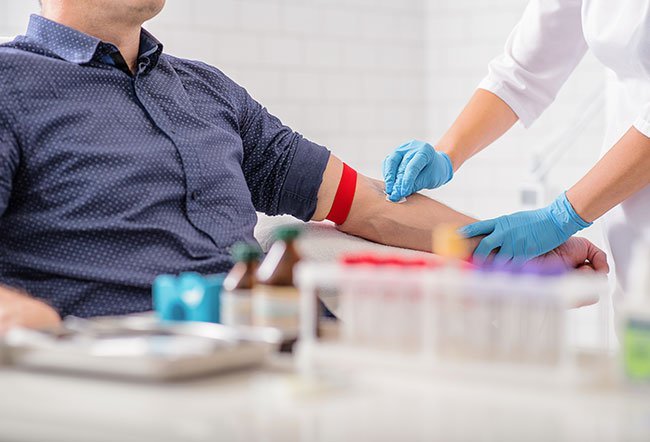Can Testicular Cancer Be Detected in Blood Tests?
The testicles lie in the scrotum at the base of the penis. They are responsible for the production of male sex hormones and sperms. Testicular cancer is the most common type of cancer occurring in American males between the ages of 15 to 35 years. Testicular cancer can be aggressive and spreading rapidly, but it is treatable.
Studies have shown that the risk of dying due to testicular cancer is about 1 in 5000.
To help diagnose testicular cancer, a series of radiological investigations and blood tests may be done to detect tumor markers in the blood. Testicular cancer often produces the tumor markers: alpha fetoprotein (AFP) and human chorionic gonadotropin (hCG). AFP and hCG levels can also help monitor the progress of treatment.
What are the types of testicular cancer?
Most testicular cancers are germ cell (cells that produce sperm) tumors. The two main types of testicular cancer are
1. Seminomas, which grow and spread slowly. Its two subtypes are
- Classical seminoma: This is the most common and usually happens in men 25 to 45 years of age.
- Spermatocytic seminoma: Commonly occurs in older men and usually does not spread.
2. Nonseminomas, which grow and spread quickly. They usually consist of multiple types of cancer cells, including
- Embryonal carcinoma: Contains cells that look like cells from embryos under microscopic examination.
- Yolk sac carcinoma: These cancer cells look like the sac that surrounds the embryos. This usually occurs in children.
- Choriocarcinoma: Usually rare and spreads to the rest of the body quickly.
- Teratoma: A rare tumor that contains other tissue and organs, including teeth and hair.
What causes testicular cancer?
The exact cause of testicular cancer is unknown. Some factors increase the risk of testicular cancer, such as
- Age: Testicular cancer usually occurs between the age of 20 to 35 years.
- Undescended testes (cryptorchidism): Surgical correction of undescended testes before puberty reduces the risk of testicular cancer.
- Genetic conditions, such as Klinefelter syndrome, cause abnormal development of the testes
- Family history of testicular cancer
- Human immunodeficiency virus (HIV) infection
What are the symptoms of testicular cancer?
The signs and symptoms of testicular cancer include
- A painless lump in the testicle
- The affected testicle feels firmer and harder than the other
- Dull ache in the scrotum or the groin
- Formation of blood clots in the blood vessels that can travel to the lungs causing chest pain and breathlessness
- Varicocele (swollen blood vessels), which appears as enlarged, dark blue veins
- Hydrocele (fluid around the testicle), which causes swelling
- Back pain
- Twisting of the testicle (torsion)
How is testicular cancer diagnosed?
Self-examination can help in the early diagnosis and treatment. The affected testes are enlarged, firm and usually, painless. The physician performs a complete physical assessment followed by a sonography and blood markers.
How is testicular cancer treated?
The treatment may involve one or a combination of multiple treatment modalities, which depends on the extent of the disease.
The treatment options include
- Surgery: A suspicious mass on ultrasonography is often directed taken on the operation table for removal.
- Orchiectomy: Removal of the testicle. A prosthetic can be placed.
- Testes-sparing surgery (TSS): The tumor is carefully removed, and the healthy part is left behind. This is ideal for patients with small tumors, benign, or noncancerous tumors.
- Retroperitoneal lymph node dissection: Surgical removal of the lymph nodes to which the cancer has or may spread.
- Radiation therapy: This therapy targets cancerous cells, selectively kills them and shrinks tumors using radiation.
- Chemotherapy: The tumor cells are killed with cancer medication.
- Targeted therapy: This treatment uses medication to target certain genetic proteins or other changes in and around cancer cells.


